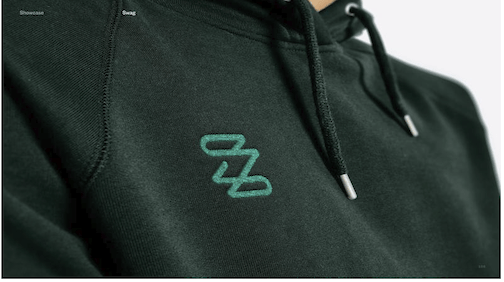By Sergio Claudio, VP, Brand Experience
When Zuora was founded in 2007, we had a vision that the world was on the verge of a monumental shift from ownership of products to access to ongoing services powered by recurring revenue business models. We coined it the “Subscription Economy.”
Fifteen years later, these innovative business models are mainstream across industries, and UBS predicts the Subscription Economy is slated to be a $1.5 trillion market by 2025. But as Zuora has naturally expanded since our inception, we realized it was time for our brand to evolve along with it. So, we embarked on a refresh to align our brand story with where Zuora is today.
Why we knew it was time
After fifteen years, it was only natural that our vision for Zuora had broadened beyond our original brand story, just as our capabilities had. After founding Zuora with one flagship subscription billing product, we’ve now evolved from subscription management to monetization, powering the full order to revenue process for the world’s leading companies, from Bloomberg to Zoom. But people still knew us (and loved us!) for powering subscription businesses. This meant how people talked about Zuora (both internally and externally) started to become fragmented. While many knew of us for one key offering, it wasn’t clear that our offerings had expanded beyond it.
Evolving your brand can be especially challenging when you’re known in the market, but even more so when you’re looking to broaden into an expanded category and change market perception. We had huge goals, but we set out to evolve our brand story to fit where our company is today, and get the market, customers, Zuora employees (ZEOs) and beyond to be energized and excited about Zuora’s next chapter.
How we approached our brand evolution: Embracing the new without abandoning the old
Companies choose to evolve their brand for different reasons. Sometimes the brand itself no longer represents what the company does, the company is now offering something completely different, or perhaps the brand now has a negative reputation. It was a different approach at Zuora. When we started our brand evolution, everyone involved
still valued Zuora’s positive brand equity, so there was no need to change the name. However, we were also aligned that it was time for the brand to evolve and become a modern representation of where the company is today.
Our positive reputation for market leadership, thought leadership, expertise and a loyal community had not changed, and we were cautious not to abandon any of these elements during the refresh. Plus, we have many long-time ZEOs, who have grown with the company because of these positive attributes.
For Zuora, it wasn’t about completely abandoning the old – we wanted to reinforce our strengths while opening up new opportunities, much like our expanded product portfolio. It was really about re-energizing.
So first, we had to get into the hearts and minds of our community – both ZEOs and those in our customer and partner community who have been on this journey with Zuora over the last 15 years. A few areas that stood out to us and ended up being extremely important factors:
- The Subscription Economy – The Subscription Economy was what we had coined, what we were known for and fundamental as our story. We also have a ton of brand equity in the word “subscribed” – our CEO Tien Tzuo literally wrote the book on it – but our definition really went beyond the word “Subscription.” What started as an early vision of companies shifting to services that create direct digital relationships with their customers, has now blossomed into an ecosystem of complex business models and technologies that has shifted the way the entire world does business. And we had reached a place where leaders and companies also defined the Subscription Economy in different ways. We didn’t see it as strictly a pricing model, or a charge you pay every month, but as any type of business model that creates and nurtures ongoing relationships with customers. After many conversations with people inside and outside of the brand to understand the world’s understanding of the “Subscription Economy,” we learned that many had been focusing on the most basic models within it, and that it was time to highlight the changes that have come from this expanded, matured Economy.
- “Zuora Teal” – Teal had been a dominant color at the company for many years, so when we started the brand project, we initially sought to change the dominant brand colors with a new look and feel. But after conversations internally and externally, we were surprised with how people connected Teal to their experience with Zuora. It felt like for Zuora, the color was comforting and familiar both to ZEOs who had been with the company a long time, and to those who had just joined the brand. It represented passion, uniqueness, and boldness. And it felt authentic to carry it over into our refreshed brand. So instead of changing it, we evolved it. Amplified it. And, we grounded the color with a new deep Forest Green for a bolder, more grown up and sophisticated feel.

- Unveiling a logomark – Teams tend to think about this element first, but it’s often one of the last parts that comes together – a symbol that comes as a result of all of the research and meaning that goes into establishing the foundational elements of the brand, which we did not have before this evolution. It also tends to be the hardest element to land, given that it requires a legal process and trademark searches to launch. Now, our new logo and wordmark are reflective of the recurring relationships of subscription businesses, all tied together on an infinite path forming our favorite letter, “Z.”

- Refreshed color palette and new design system – As we continue to strive for diversity, equity and inclusion, it was also critical that we took an opportunity to make our design system more accessible. Our new color palette includes more vibrant colors against bold backgrounds, which is important for those who have visual impairments to be able to access our assets with ease. Choosing the right colors meant a more inclusive experience with our brand.

How we got aligned and made it happen (it’s not as easy as you think!)
Even with a consensus that a brand evolution needs to happen, company – and stakeholder-wide alignment can still be challenging. It’s important to continue to drive alignment as much as possible. That being said, it’s normal for the process to be delayed, and progress might happen at a different pace than expected. It’s important to be aware of other factors that can impact your timeline. Major tasks like legal reviews and trademarking, creating new swag, and even updates to your facilities (like the logo on your building!) can take longer than expected. Be ready for unpredictable company events to come up, which might impact your timeline or force you to pivot or adjust the launch moment.
As you start a refresh, be careful about what types of ideas you (and your team) start the process with, and consider the preconceived notions that certain team members will have, and how that could lead you in a certain direction.
When it was finally time to make the reveal, it was important for us to create a moment. For us, that meant making it meaningful for the company and ZEOs internally, starting with a preview at our sales kick off early in the year. When you mark the moment – that’s when people see everything come together and it really connects.
To learn more, check out Zuora’s Brand Evolution Story Page, our updated About Zuora page, and our new Sizzle Reel below!